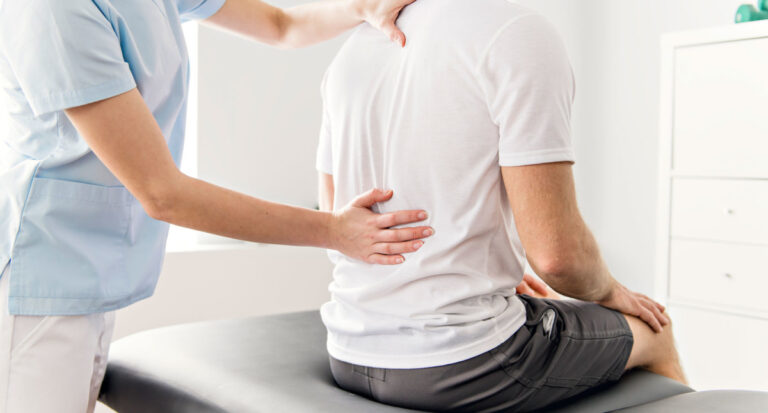Have you ever noticed discomfort after sitting at your desk for extended periods or after a long day of looking at your phone? Your posture might be contributing more to your discomfort than you realize. Beyond its visual appeal, posture plays a critical role in overall health. Poor posture could be an underlying cause of chronic pain you’ve been experiencing for years.
Let’s explore the connection between posture and chronic pain, and how Osteopathic Manipulative Medicine (OMM) can offer relief. With the right approach, pain doesn’t have to be a permanent part of your life.
Posture: More Than Just a Matter of Appearance
Posture refers to how you hold your body while sitting, standing, or moving. Misalignment in your posture can put undue stress on muscles, ligaments, and joints, leading to various health issues, including:
- Back pain: Research indicates that up to 80% of adults experience back pain during their lives, often linked to poor posture.
- Neck pain: Leaning your head forward can significantly increase strain on your neck. For example, tilting your head forward by just 2 inches can increase the load on your neck by 60 pounds.
- Headaches: Misaligned posture can create tension in the neck and shoulders, which is a common trigger for tension headaches.
Chronic Pain and Posture: A Cycle of Discomfort
Chronic pain—pain lasting more than three months—affects approximately 1 in 5 adults in the U.S., according to the CDC. Poor posture is often an overlooked contributor to this persistent discomfort. When your body’s alignment is off, it compensates by overusing some muscles and underusing others, which can result in stiffness, inflammation, and chronic pain.
For instance, prolonged slouching can:
- Tighten chest muscles, pulling the shoulders forward.
- Weaken back muscles, reducing spinal support.
- Compress nerves, potentially leading to tingling or numbness in the extremities.
How OMM Addresses Chronic Pain
Osteopathic Manipulative Medicine (OMM) is a hands-on approach employed by osteopathic physicians (DOs) to diagnose, treat, and prevent various conditions. By focusing on the body’s structure and function, OMM aims to enhance the body’s natural ability to heal itself.
Here’s how OMM can help:
- Restore Alignment: Gentle manipulative techniques realign the body, improving posture and alleviating pain.
- Increase Mobility: OMM helps restore motion to restricted joints and muscles.
- Enhance Circulation: Improved blood flow reduces inflammation and promotes healing.
- Address Root Causes: Unlike generalized treatments, OMM targets the underlying causes of your pain rather than just managing symptoms.
Evidence Supporting OMM
Research highlights the effectiveness of OMM in managing chronic pain. A study published in The Journal of the American Osteopathic Association found that OMM significantly reduced low back pain compared to standard care. Similarly, a study in BMC Musculoskeletal Disorders emphasized its role in improving function and quality of life for individuals dealing with chronic pain.
Practical Tips to Improve Posture
While OMM is a powerful tool, incorporating small changes into your daily routine can also make a significant difference. Here are some strategies to enhance your posture:
- Ergonomic Workspace: Ensure your chair, desk, and monitor support your body’s natural alignment.
- Regular Breaks: Stand up and stretch every 30 minutes, especially during long periods of sitting.
- Core Strengthening: A strong core provides better support for your spine.
- Mindfulness: Stay aware of your posture throughout the day. Setting reminders can help you stay on track.
Taking Steps Toward a Pain-Free Life
If poor posture is contributing to your chronic pain, consider consulting an osteopathic physician for OMM treatment. Combined with mindful adjustments to your daily habits, OMM can help restore your body’s natural balance and reduce discomfort. Addressing these issues now can lead to improved quality of life—because living with pain should never be the norm.
Start your journey toward better posture and reduced pain today. Reach out to an osteopathic physician and take the first step toward a healthier, more comfortable future.






